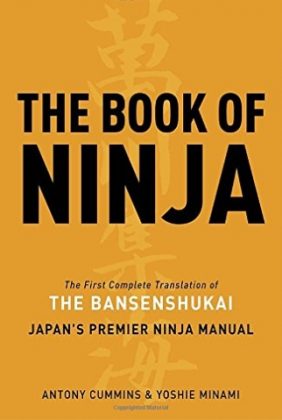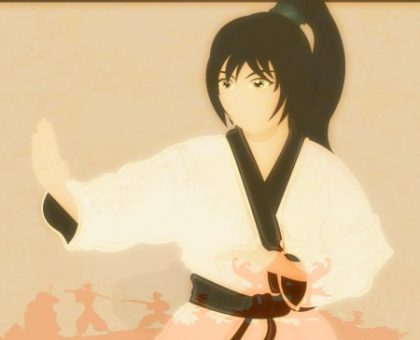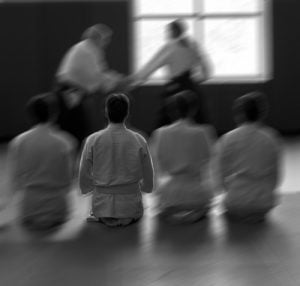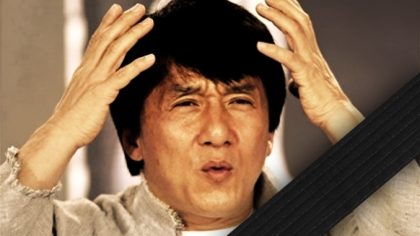What fighting techniques did the ninja train in? Was there actually a ninja martial art? Find out what historical documents in Japan reveal about samurai and ninja martial arts.
We’ll look at reliable sources that have stood up to independent scrutiny.
What the difference? – Ninja Martial Arts vs. Ninjutsu Training
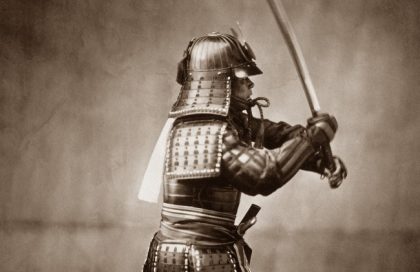
Ninjutsu and martial arts are two distinct disciplines for historical ninja. They are not the same thing; ninjutsu is not a martial art. This is backed not only by historical sources but also modern practitioners (of ninpo and Banke Shinobinoden ryuha).
What modern ninjutsu acknowledges
The Shinobijutsu, also known as Ninjutsu, includes military tactics, techniques, infiltration, sabotage, intelligence, information … etc.. The Shinobijutsu therefore it is not a martial art […]
Banke Shinobi Spain – Introduction
There are three important original texts existing today–Bansenshukai, Ninpiden and Shoninki. […] However, these texts do not include any description of unarmed fighting techniques or even a curriculum of techniques. In other words, the texts can not date or authenticate most of what is today taught as ninjutsu fighting skills.
Genbukan Tokyo Shibu – Ninpo/Ninjutsu History
In its historical definition, Ninjutsu (more accurately – shinobi-no-jutsu) is a system of espionage, subterfuge and sabotage specific to the feudal Japan. It involves infiltration, disguise, manipulation of psychology and physical conditioning for extraordinary circumstances.
This definition clearly excludes martial arts, which includes both armed and unarmed fighting techniques and strategies.
Where does the idea that historical ninjutsu was a martial art come from?
The idea the ninjutsu is a martial art comes from Takamatsu organisations’ (Bujinkan, Genbukan and Jinenkan) definition of the term.
Kacem Zoughari (Bujinkan Instructor and Researcher of Japanese history) explains in the video below. While ninjutsu was historically indeed a system of espionage, the term can be used as an umbrella term for all ninja training disciplines. In other words, martial arts can be considered a subset of ninjutsu.
His explanation is valid. Definitions evolve over time. And for convenience, it’s easier to group all disciplines – including fighting techniques – of the ninja into one common term: ninjutsu.
Nonetheless, for historical accuracy, this article will distinguish ninjutsu and the possible martial arts of the ninja.
What Martial Arts did Shinobi Train In?
Is there anything different or special about the martial arts used by the shinobi? What do records like the Shoninki, Bansenshukai and Shinobi Hiden say?
None of the historical records has instructions on fighting techniques. No universal or specific ninja martial arts system have been specified.
For instance, the Bansenshukai mentions that ninja should train in swordsmanship, but provide no specific instructions or school where this would be taught.
This makes sense since many ninja were from the bushi class (samurai, ashigaru and jizamurai). They would already have some form of martial arts training in both unarmed and weapon combat.
Unarmed and weaponized ninja martial arts
Of course, jujutsu would be the generic hand-to-hand combat system in Sengoku and Edo period.
But what about weapons?
Samurai (in speaking about them as a group) were trained in archery, spear fighting, Naginatajutsu and even matchlock rifles, to name some weapons. Depending on their clan, job specification, politics, region and other complex factors, they might be trained in any of the mentioned weapons.
Even then, sword encounters were more common and the Bansenshukai’s advice would indicate that swordsmanship was a staple.
The typical shinobi’s martial arts training
Therefore, the typical shinobi would have trained in some variant of jujutsu, kenjutsu (swordsmanship) and iai (sword-drawing strikes).
This is, of course, a generalisation. Complex factors in clan, politics, geographic region and more, would determine what martial arts a shinobi/bushi would train in.
For example, if they were involved in capturing criminals, they would have knowledge of quick rope-binding (a subset of hojojutsu – hayanawa).
Since ninja martial arts might just be regular samurai martial arts, the many koryu bujutsu (Japanese classical martial arts traceable to Edo era and before) would be what you are looking for. Additional details will be included in the next article.
Note: Modern traditional Jujutsu might be known as one generic martial art. But in Sengoku and Edo era, each clan might have their own version of jujutsu. The same can be said of any Japanese martial art that survives till today.
Ninjutsu Mindset: How to fight like a ninja?
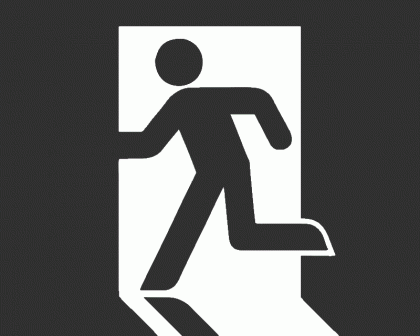
Since the ninja’s job predominantly involved espionage, shinobi prioritised escape over fighting. Historical records confirms this and further emphasizes that information gathered by ninja had far greater value and impact, than them joining a physical battle.
However, there are specific shinobi jobs that makes fighting unavoidable – when the shinobi were tasked to capture criminals and wanted samurai. Whether intentional or unavoidable, historical texts are clear about one thing when facing combat: the ninja had to deal with the enemy swiftly.
Now, if the shinobi were tasked to hunt criminals and end fights swiftly, does that mean their fighting ability were superior to regular samurai? Were their martial arts enhanced with secret techniques to give them an edge over their adversaries?
Is there anything in reliable historical texts that enhances a ninja’s existing martial art foundation?
What to do in specific combat situations

While there is no reliable evidence that there was a unique system of ninja martial arts, some ninja manuals do explain what to do for specific combat situations.
These are tactics that seem to give shinobi an advantage by exploiting enemy’s psychology, terrain, visibility and other factors; instructions that made shinobi more effective and efficient in combat situations that arise in either function of espionage or criminal-catcher.
Use of appropriate weapons in night attacks
For example, long-ranged weapons such as the arrow and bow, and tachi were to be used for night attacks. The enemy would be hard to see at night. Long-range weapons allowed the shinobi to maintain a safe distance during attack.
Use of ordinary objects in unexpected ways
Also, unconventional fighting methods that regular samurai would not expect (and train against) were also prescribed. For instance, a sageo cord (and even obi) could be used to disarm sword and spears.
Manipulating the adversary’s mind
When it comes to capturing people, the Bansenshukai injects some ninjutsu-like tactics – to turn a group of people against each other. There are vague suggestions on how to do this, depending on the relationship among the people to be captured.
But let’s look at the perspective of In Search of the Ninja…
What ‘In Search of the Ninja’ Says
In Search of the Ninja has a section devoted to martial arts. It asserts that a unique system of ninja martial arts is improbable. For that to happen, ninja throughout Japan had to be a unified force training in the same system.
Moreover, the predominant job scope of the shinobi, espionage, discouraged ninja to fight.
Thus, making the author question if a dedicated martial arts system would even arise.
For the analysis in its entirety and other facts about the ninja, derived from the three historical texts, read the book.
Still — even if not as a united force — could the best practices of the shinobi when facing an unavoidable fight during espionage or capturing been compiled and incorporated in a martial art of a particular clan?
Note: Antony Cummins has responded to my questions regarding this theory here.
Were martial arts that the ninja used enhanced?
There are specific tactics that may have altered a ninja’s martial art to make it more effective for their job requirement; be it to prioritise escape when being confronted or to quickly capture when hunting criminals. But there is little evidence from historical sources that these tactics would make a shinobi’s martial art a system that is unique from the samurai’s.
Modern ninjutsu, unfortunately, cannot be regarded as reliable evidence because its history and transmission of knowledge cannot be traced satisfactorily to either Edo or Sengoku period.
Of course, there may be more techniques passed down by oral tradition (kuden) that we do not know about. And just because reliable records cannot confirm it, doesn’t make the theory untrue. It just means that until new independent evidence can be found, ninja martial arts as a unique system cannot be proven beyond doubt.
Read the next parts of the series below, where we explore the theory of ninja martial arts as an evolved system from the perspective of modern ninjutsu.
Related Articles: Ninja Martial Arts
- Modern ninjutsu perspective on martial arts of the ninja (features Eric Shahan, Jinenkan)
- Antony Cummins on ninja martial arts (Historical Ninjutsu Researcher)
- Upcoming: Martial arts for the modern ninja

